
Though no one can go back and make a
brand new start, anyone can
start from now and make a
brand new ending.


Though no one can go back and make a
brand new start, anyone can
start from now and make a
brand new ending.
Resource: The Japan Times
http://www.japantimes.co.jp/life/2013/03/27/people/kite-artist-tetsuya-kishida/#.UVVGAldjh_M
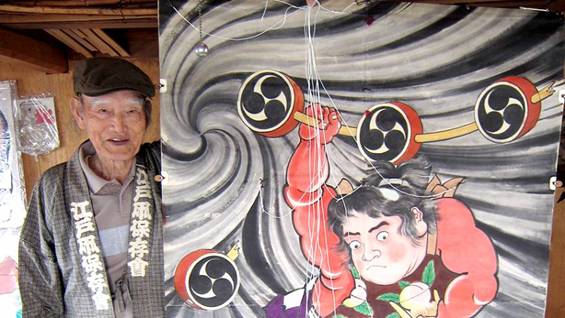
Japanese kite artist Tetsuya Kishida, 89, has been creating and flying kites since the age of 6. He used to be a salesman for the steel industry and he later sold bonsai. In his late 40s, he finally turned his hobby of painting kites into a profession. His artistic repertoire is inspired by images from musha-e, a genre of ukiyo-e (floating world images) that depicts samurai in battle scenes. He also paints Japanese heroes the from the Heian Period (794-1185) to the Edo Period (1603-1867), including kabuki stars. Although kite painting is his greatest passion, flying them comes a close second. Five days a week, weather permitting, he goes out with four similarly minded friends, and they fly their kites.
To lie on the grass and gaze at a beautiful kite above is the best feeling in the world. I rarely have this pleasure as I’m usually chasing my kites. That’s wonderful, too. I make Edo-style kites, which are stabilized by 14 to 17 lines that are connected to the sides of the picture and spaced at regular intervals. With these lines we balance the image so people on the ground can see it well. On the top, we add an extra bamboo pole that vibrates to create a wonderful buzzing sound as the wind carries the kite. This is what makes an Edo kite special. It lets people know that there is a kite above them. “Look up!”
Kites are a perfect way to study history. Kites are invested with prayers for children to grow into healthy and strong adults. This is why I paint strong characters. For example, Momotaro is a cute but powerful hero in Japanese folklore. When depicted as a baby, he is shown with peaches because he was found floating down the river in a giant peach. On a kite, however, he is depicted fighting demons, helped by his friends a dog and a monkey.
Kites come alive in the sky, and that’s how they bring happiness to all who see them. Kites awaken the carefree child in us. I’m often asked to paint my images on canvas so people can hang them in their homes as paintings. I really don’t like this idea because the whole purpose of a kite is for it to dance in the air and be seen by many, not to be caged in a room.
Don’t argue! I never do. I ignore the bad guys. Getting angry never gets positive results.
Every country must accept and follow international law. When Japan surrendered on Aug.15, 1945, I was a pilot at an air station in what is now North Korea. The Soviet army entered our camp. We were ordered by our commander not to fight as the war was over. We peacefully boarded the Soviet ships as we thought we were returning to Japan. We were packed in like sardines but we were happy, nevertheless. But when the ship entered port, we were in Nakhodka, a Russian city near Vladivostok. Imagine our shock! Next we were transported to Siberia. It was -45 degrees when we arrived and we had to walk for three days, about 100 km, to reach our camp. Many Japanese died on the way. For the next two and a half years I was in a Siberian gulag, working in horrible conditions. I’m lucky because I survived. Many of the 600,000 Japanese POWs did not. If the Soviets had followed international law, there wouldn’t have been suffering like that.
Enjoy life and don’t worry if you don’t fit the mold people want you to be in. Today’s rules will be broken tomorrow, anyhow.
Thanks to my spouse and her bento (boxed lunch) making, we got married. Soldiers like me had no idea about women. Hard to believe but true. We were drafted into the army as teenagers and we returned as men. Luckily, I met a woman who gave me a bento, then another, then another and so on. Somehow, we began talking and dating. We soon got married and this September will be our 60th wedding anniversary. I feel very lucky.
Getting a good deal means someone is not making enough money. In order to make beautiful kites we need time, but few people are willing to spend the money to make it worth the artist’s time. Everyone wants a good deal, but a good deal is usually pretty bad for the artist.
It’s easy to stay healthy when we love someone. I can’t get sick because it would be too tough on our daughter. She would feel the need to take care of me and that would break her.
If I didn’t fly kites, I’d be sitting at home — or in a nursing home. Running after a kite four to five hours a day keeps my body healthy and strong. The line is up to 200 meters long, so I need a lot of muscle strength to hold onto it. I never want to walk with a cane or sit in a wheelchair. When I die, I want to drop dead in a field with my kite in the sky.
Progress drives out old culture — literally. When I was a child, most people cultivated bonsai and had them outside in front of their homes. But once cars became popular, everyone turned their front yard into a parking space. Cars replaced bonsai.
If the weather is nice, go out! For my 88th birthday, my friends gave me many kites, so now I have to fly those as well as my own ones. I’m kept busy!
The Japan Times “Kite artist Tetsuya Kishida” by Judit Kawaguchi
http://www.japantimes.co.jp/life/2013/03/29/general/dine-with-a-backdrop-of-cherry-blossom/#.UVVEAVdjh_M
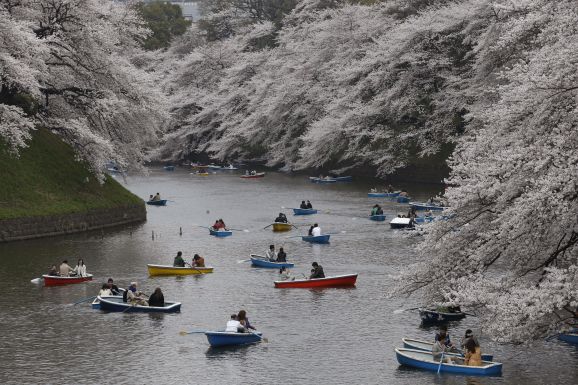 AP Photo/Shizuo Kambayashi
AP Photo/Shizuo Kambayashi
People enjoy cherry blossoms along the Chidorigafuchi Imperial Palace moat in Tokyo.
Cited from JAPAN TODAY http://www.japantoday.com/category/picture-of-the-day/view/pleasant-afternoon
Japanese people highly value the four seasons and it reflects greatly on our food culture. The seasonal foods play an important role in keeping Japanese people healthy.
・・・・・・・・・
Ready for spring’s fresh bounty
By MAKIKO ITOH
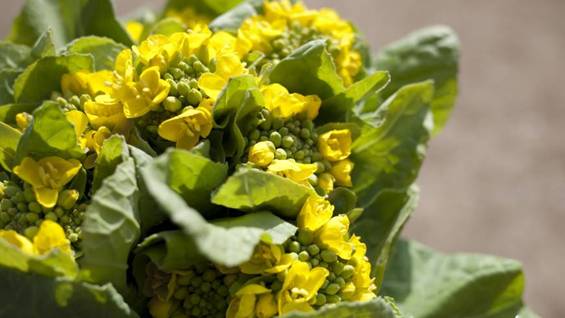
Vernal treasure: Closely related to broccoli, nanohana is best eaten in spring, when its buds are yellow-green. | MAKIKO ITOH
After an unusually cold winter, the sight of spring produce is particularly welcome, especially the bright yellow-green of nanohana. While plain-green nanohana is available almost year-round these days, it’s only in early spring when you see the ones picked from open fields that are covered in tiny just-emerging flower buds.
Nanohana is one of the oldest vegetables cultivated in Asia, including Japan. It’s closely related to the rapeseed or canola plant in Europe and the West, and also to broccoli, since all of these are members of the brassica family. While in the West rapeseed is usually only grown for its seeds, from which oil is extracted, in Japan the plant is used at various stages of growth. Each stage is given a different name, too: The young spring shoots are called nanohana, which literally means “flower of vegetable,” and the mature plant that’s used for oil as in the West is called aburana, which means “oil plant.” Rapeseed oil is called natane abura or “vegetable-seed oil” and has been used at least since the Edo Period (1603 to 1867).
While they are not as widely celebrated as sakura cherry trees, fields of yellow flowering nanohana are also a much-loved harbinger of spring, coming in between the ume (plum) blossoms that open in mid-February around the Tokyo area and the cherry blossoms that bloom in April. The word nanohana is a recognized seasonal word in haiku, signifying early spring. There’s also a well-known children’s song called “Oborozukiyo” (“Hazy Moonlit Spring Night”) that poetically describes a misty nanohana field in the early evening with a gentle spring breeze blowing over it.
Nanohana is a very versatile vegetable, high in vitamin C as well as other nutrients. It’s also a very frugal vegetable, since there’s nothing to throw away — the florets, stems and leaves are all edible. Unlike some other early spring vegetables, it has no bitterness or tannic quality, so it doesn’t need any special pretreatment. It both tastes and looks its best when the yellow flower buds are just emerging; once the flowers start to open the stems get a little tough, although you can get around this by cooking it just a bit longer.
As I’ve mentioned, nanohana is closely related to broccoli; I’ve seen varieties sold in the United States as broccolini or baby broccoli. The closest vegetable in the West might be broccoli rape, broccoli shoots that are popular in Italy. So you can use it in the same way you would use broccoli: simply steamed or boiled, stir-fried, in soups and so on. Nanohana is also excellent deep-fried with a tempura batter.
The most traditional way to eat nanohana in Japan, especially at this time of year, is as the side dish ohitashi. Simply cook the nanohana in boiling water until the stalks are just tender. Refresh under cold running water and drain well. Serve in a small bowl with some soy sauce or dashi stock mixed with soy sauce (3 tbsp of dashi to 1 tsp of soy sauce) and top with some katsuobushi (bonito flakes) or toasted sesame seeds. The bright-green florets with a sprinkling of yellow will add a colorful breath of spring to your dinner table.
The Japan Times:
http://www.japantimes.co.jp/life/2013/02/22/food/ready-for-springs-fresh-bounty/#.UUwEpldjh_N
Are you ready to take off your heavy winter jackets and enjoy spring fashion?
Here is a good article you may want to go through!
・・・・・・・・・
4 Spring foods to help you lose weight.
By Kerri-Ann Jennings, M.S., R.D. Former Associate Nutrition Editor for EatingWell Magazine
As spring nudges its way forward, some of us are left with an unpleasant souvenir of winter—an extra “layer.” Though that winter coat might have kept us warm through the long, cold season, by spring it’s time to shed the padding. The good news is many springtime foods promote weight loss naturally, and not just because they’re lighter than those hearty winter dishes.
Here are my top picks for spring foods to help you slim down.
1. Strawberries
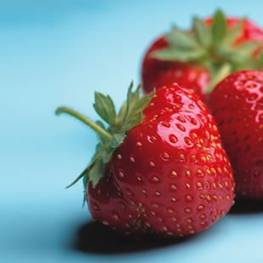 Strawberries’ fiber content makes them a good choice for weight loss. A two-year study published in the Journal of Nutrition found that people who ate 8 extra grams of fiber for every 1,000 calories per day lost about 4 1/2 pounds. (Women who decreased their fiber intake actually gained weight.) One cup of strawberries has a respectable 3 grams of fiber and more than a full day’s recommended dose of vitamin C—an antioxidant that helps keep skin healthy.
Strawberries’ fiber content makes them a good choice for weight loss. A two-year study published in the Journal of Nutrition found that people who ate 8 extra grams of fiber for every 1,000 calories per day lost about 4 1/2 pounds. (Women who decreased their fiber intake actually gained weight.) One cup of strawberries has a respectable 3 grams of fiber and more than a full day’s recommended dose of vitamin C—an antioxidant that helps keep skin healthy.
2. Eggs
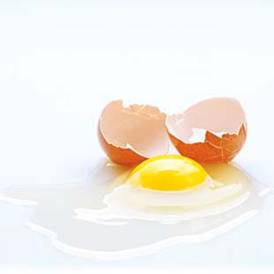 Eggs are packed with protein, which staves off hunger. In one study, dieters who ate eggs for breakfast felt fuller longer and lost more than twice as much weight as those who got the same amount of calories from a bagel for breakfast.
Eggs are packed with protein, which staves off hunger. In one study, dieters who ate eggs for breakfast felt fuller longer and lost more than twice as much weight as those who got the same amount of calories from a bagel for breakfast.
3. Salad Greens
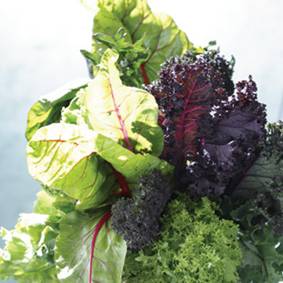 Filling up on fiber- and water-rich foods first can help prevent you from overdoing high-calorie fare later. Research out of Penn State shows that eating a first-course salad can reduce overall calorie intake at a meal by up to 12 percent. Not a fan of salad? Vegetable soups achieve the same result (in fact, a different study found that people who started lunch with vegetable soup ended up eating 20 percent less than those who skipped the soup).
Filling up on fiber- and water-rich foods first can help prevent you from overdoing high-calorie fare later. Research out of Penn State shows that eating a first-course salad can reduce overall calorie intake at a meal by up to 12 percent. Not a fan of salad? Vegetable soups achieve the same result (in fact, a different study found that people who started lunch with vegetable soup ended up eating 20 percent less than those who skipped the soup).
4. Mushrooms
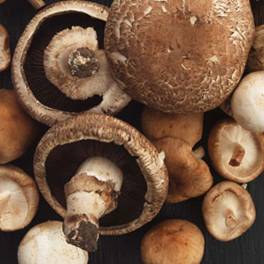 Mushrooms taste meaty, but have only a fraction of the calories and fat of red meat. Research reports that when people ate mushroom-based entrees, they felt just as satisfied as when they’d eaten those same dishes made with beef.
Mushrooms taste meaty, but have only a fraction of the calories and fat of red meat. Research reports that when people ate mushroom-based entrees, they felt just as satisfied as when they’d eaten those same dishes made with beef.
Now is the time for seasons to change and we pay close attention to our skin care. Here is the article I believe it worth reading!
・・・・・・・・・
Welcome Spring With Fresh Skin Care & Makeup Ideas
By Dr. Daniel Shapiro, FACS, Shapiro Aesthetic Plastic Surgery and Skin Klinic

Photo courtesy of Dr. Shapiro
As days grow longer and the spring equinox approaches, it’s a good idea to start thinking about transitioning your makeup from its winter routine. Here are some tips to help you prepare your skin for warmer weather and refresh your look for a new season.
Rethink your moisturizer. Winter is very hard on skin. Extra-hydrating moisturizer is a must with cold, harsh weather outside and dry heat from the furnace inside. However, using these products in warmer weather can turn your skin greasy and uncomfortable. Switch to a lighter moisturizer in the spring for better results. Many women swear by moisturizing gel creams; check to see what your favorite beauty brands offer. If your skin is dry year-round, try a rich night cream to keep your face supple and soft, and use a lighter formulation during the day.
Lighten up. Women often use more makeup during winter to give sun-deprived skin a boost of color. Take a more subtle approach for the spring. Put away your lipstick in favor of a gloss or tinted lip balm. Swap your foundation for a tinted moisturizer for a more natural look. If you find you still need a bit more warmth, dust on some bronzer.
Experiment with new shades. Welcome the season by trying out some new makeup colors. Switch from black to brown eyeliner for a very easy spring look. Eye shadows in all shades of green (really!) are huge this year. Truly fashion forward? Take a cue from the Spring 2013 runway shows and try a coral nail polish or cherry red lipstick.
Don’t forget the SPF. It’s important to protect your skin from the sun year-round, of course, but you’ll certainly spend more time outside as the weather warms. Always use sunscreen, and make sure to choose skin care products with SPF to protect yourself from damaging UV rays.
URL: http://sheacorridor.azcentral.com/news/health/51304-welcome-spring-fresh-skin-care-makeup-ideas
I would like to introduce another Okinawan vegetable, “Shima-ninjin.”
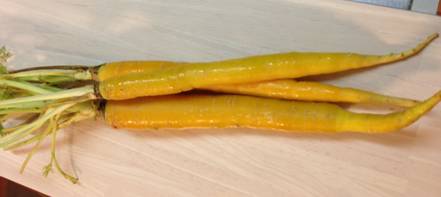
“Shima-ninjin” is originated in the East. It is yellow, thin, and as long as 30 to 40 cm. Despite how it looks, it is called in Okinawan dialect “chide-guni,” meaning “a yellow radish.” “Shima-ninjin” used to grow all over Japan, but now it can only found in Okinawa.
Compared to the general orange carrots, “Shima-ninjin” is sweeter, softer, and has stronger smell. It contains abundant of Vitamin A, which is effective to relieve eyestrain. Just like the regular carrots, when cooked with vegetable oil, absorptivity of Vitamin A increases. I recommend eating “Shima-ninjin” often especially in cold season because carotene of “Shima-ninjin” helps our body temperature to rise. In addition, “Shima-ninjin” contains calcium, iron, and antioxidant, lycopene much more than the regular orange carrots.
For its nutritional value, “Shima-ninjin” has been appreciated as a medical food in Okinawa for a long time. It is an evitable ingredient to make Okinawan local soup with chopped pork and other vegetables. It also makes delicious tempura or stir-flies.
The best season of “Shima-ninjin” is short, between November and April. When you come across with it, I hope you don’t fail to try because it is rarely seen in a market other than those relevant seasons.
Reported by Tomomi Tanaka, Sugahara Institute
“The best part of traveling is the moment when you unexpectedly come across something interesting.” When we say the above in Japanese, we often use the word “daigo-mi” to describe “the best part.” Daigo-mi literally means “taste of daigo,” but we don’t know what daigo tastes like and we wonder how it tastes.
I checked the origin of the word daigo, and found that the word was mentioned in a Buddhist scripture called the Nirvana Sutra. According to the sutra, The Nirvana Sutra is the best of all the Buddhist texts just as “daigo” is the best of all the five flavors (gomi) in the processing of dairy products.
Regarding gomi (the five flavors), the sutra mentions that milk is processed like this:
nyu (milk) –> raku –> sei-so –> juku-so –> daigo
Therefore the last one, daigo, was supposed to be the best flavor, equivalent to the best Buddhist sutra and the highest-quality product made from milk.

Buddhism and dairy! What a surprising combination. Even more surprisingly, dairy products existed when Buddhism came to Japan from India through China and Korean peninsula. Was daigo something like butter, or more like cheese?
Buddhism was introduced to Japan about 1,500 years ago. On the other hand, milk products became popular among Japanese people after World War II. In the meantime, I don’t think the average person in Japan had ever tasted milk or cheese. If so, daigo may have been Japan’s oldest cheese.
By the way, when and how was cheese first made?
Cheese is made when you curdle milk in some way or another, solidifying it by draining the water. There are several theories about the origin of cheese and it is unknown which one is accurate, but it is said that cheese was first introduced to the world about 6,000 years ago.
Among dairy products, there are so many kinds of cheese made of different ingredients and by different processes. Like bread and wine, cheese was first made by chance, but there are three main cheese-making processes. These are to: 1) curdle milk by adding rennet, which contains enzymes; 2) curdle milk by adding an acid such as vinegar; and 3) simmer milk until it becomes solid.
Various kinds of cheese we have today originated in Europe, and most of them are manufactured by method no.1 (enzyme coagulation).
Well, how was daigo made?
According to the Nirvana Sutra, daigo was so delicious, and cured all sorts of diseases. In the Asuka period, a culture of milk products was introduced along with Buddhism. Regarding so, one of the introduced dairy products, whose quality level was just below daigo, the processing formula and the historical record that show it was used for a tribute to Emperors were found in Japan’s ancient documents such as Engishiki. So was a very rare and valuable processed food providing good nutrition that only people of the noble class were able to enjoy.
So was made by the abovementioned method no. 3 – simmering cow milk – until it became solid and matured. This is probably Japan’s oldest milk-based processed food. However, there’s no record mentioning that daigo was produced in Japan. Eventually daigo was not available in Japan. Later, the culture of eating milk products in ancient Japan passed away as aristocratic society came to an end.
So, I was not able to taste daigo. However, you can taste so instead of daigo! A dairy farm at the south foot of Mt. Kaguyama, Nara pref., where the capital of the Asuka period was located nearby, succeeded in producing so based on the ancient recipe and put it on the market under the trade name “Asuka no So.” It is a natural food made only by milk, using no additives.

I got this so via the Internet. Asuka no So is a brownish square cake with a hard crust on the surface, obviously looking like an ancient cheese. You can taste its sweetness and rich flavor of milk. Yes, it should be cheese. This is a dairy product that only a small number of noble people were able to enjoy in the Asuka period about 1,300 years ago. Thanks to the word daigo-mi meaning “the best part,” I was able to savor the taste of the best part of Japan’s ancient past – its oldest dairy product , as revived in the present.
“Asuka no So” Milk Kobo Asuka’s website: http://www.asukamilk.com/so/index.html
Reported by Yukari Aoike, Sugahara Institute
Japanese love Asian cuisines such as Chinese, Korean, Thai, Vietnamese, and Taiwanese cuisine. How about Malaysian cuisine? Unfortunately, it hasn’t been popular yet.
Why?
Maybe it’s because of the image of boiled fish? Is it because its color visually dark? Is it because of HALAL food for Islamist?
I have been to Malaysian restaurant in Ikebukuro named “MALAYCHAN” (http://www.malaychan-satu.jp/) when I was a university student. Malaysian dishes were too rare to try for me then, I could eat only Nasi Goreng (Malaysian fried rice).
But now, I know Malaysian food suit Japanese taste!!
There are a plenty of tasty foods in Malaysia. Malaysian food is not popular like Thai food in the world, but the great thing in a multi-ethnic, multi-cultural Malaysia is that you can eat various ethnic cuisines.
By the way, what is Malaysian cuisine?
There are 4 major cuisines, which are Malay, Malaysian Chinese, Malaysian India and Nyonya. Nyonya cuisine combines Chinese and Malay cooking techniques and ingredients and it’s started from the Straits Settlements (Penang, Malacca, Singapore). The unique thing is that pork is used for Nyonya cuisine.
Furthermore, there are many authentic ethnic restaurants. Of course, you can find a lot of Japanese restaurants! You have options to choose Ramen shop and even SUKIYA Gyudon recently came to Kuala Lumpur!!
The number of Malaysians who visit Japan is recently increasing. But Malay Islamists seem to feel difficulty to find HALAL food in Japan. I have heard from a Malay friend that there is one popular chain restaurant in Japan. Guess which chain is?
It is TENDON TENYA. Tendon is a dish cooked fish and vegetables, so they can eat Tendon in relief.
Halal food is the one allowed under Islamic dietary guidelines. Chicken and Beef are allowed, but they must be manufactured under the special HALAL process. That’s why Islamists can’t eat Gyudon or Oyako-don in Japan.
In supermarkets in Malaysia, Non HALAL foods such as pork and alcohol are sold in a separated corner. I am afraid to say, but I can’t satisfy the quality of pork sold in supermarkets.
In such circumstances, there is the most famous pork shop in Japanese. The pork shop is located in KDDI market, Kuala Lumpur. KDDI market is always crowded as kitchen of local people.

No.1 pork shop in Japanese is separated from other shops and located next to car parking in the basement.
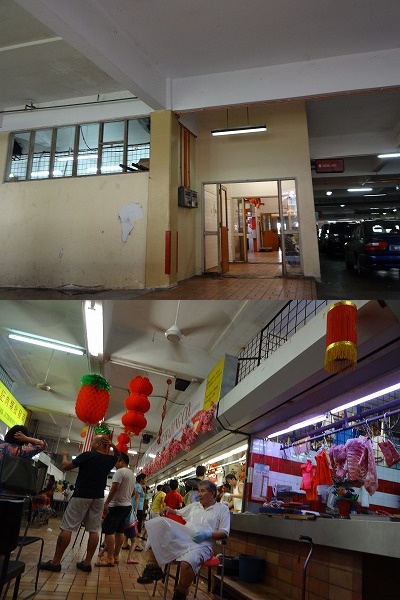
The Key points of popularity are freshness, affordable price and quality. And one more important point for Japanese is staffs meet requests of slice. We can buy slices for Shabu Shabu, belly slices, blocks for braised pork belly etc. This shop is the gathering spot for Malaysian Chinese and Japanese.
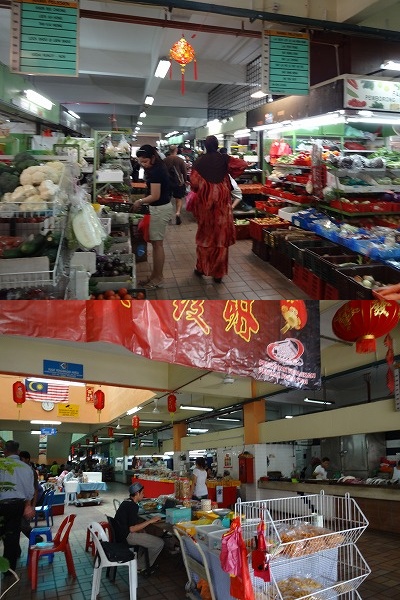
You can find fresh and affordable vegetable, fruit, fish, and meat in this market.
One of fish shops is also famous in Japanese because staff can say some kinds of fishes in Japanese and slice into fillets and debone (Sanmai Oroshi in Japanese).
Do you think it’s very simple reasons?
Yes, it’s simple. But don’t you think that it’s hidden missing business tips in this example?
Reported by Makiko Wada, Sugawara Institute
Oise Mairi, the First Group Tour by Japanese Common People

When the regime changed from the Emperor to samurai in Japan, Ise Jingu was worshiped as the supreme deity. In the medieval period, however, when Japan was in the midst of endless wars, the Shikinen Sengu ceremony ceased for a while. During that time, wars resulted in damage to the Jingu site and the Jingu went through hard times both physically and economically.
Then onshi, priests who managed religious services in the Jingu, rose to take action. In order to promote visits to Ise Jingu among ordinary people including peasants, onshi traveled all over the country, distributing the useful Jingu calendar to homes and actively engaging in missionary work.
During the Edo period, when the world became stable, the transportation network including the Go-kaido, the five major highways was constructed, making traveling easier. That was when group pilgrimages to Ise Jingu gained great popularity among peasants and townspeople. People called the tour “Oise-mairi.”
Oise-mairi, a.k.a., okage-mairi was more like worshiping and sightseeing than a pilgrimage. Here, onshi did a great job – their work of distributing calendars served as a trigger to the trend of okage-mairi. Onshi played an important role in people’s travel to the Jingu not only as priests but also as Japan’s first tour conductors. In this period, one out of six people went to worship at the Jingu every year, and there’s a song with lyrics like “…I want to go to Ise even once in my entire life…”
So 5 million people, one-sixth of Japan’s total population of 30 million at the time, traveled in groups every year. If the same thing had happened in China, the tour groups would have been regarded as a religious rebellion and executed. Traveling at that time was what you did at the risk of your life anywhere in the world. Therefore, people would travel with bodyguards. Under the circumstances, it must have been a miracle that it became the norm for people in Japan to make such unconstrained, risk-free trips to the Jingu. Considering the fact that at the time doing things in groups was a security risk, we should say that the security management of the Edo Shogunate was wonderful for its generosity.
People traveled on foot from every region of the country to Ise Jingu, and it took about 15 days from the town of Edo. It was really a long trip and naturally cost a lot of money. The trip was not what ordinary people could easily afford. So they establish a reserve fund system called “Ise-ko” in each community. Each member routinely paid a certain amount of money to the travel fund through which they covered the travel expenses for the party of representative members who would go to Ise. The representatives were chosen by lottery and the winners would go to worship the Jingu on behalf of the community.
The abovementioned funding system, called ko, effectively allowed poor people to fulfill their desires without borrowing money from a bank until the Showa period. The ko system worked when there was a mutual trust between persons involved, but it wouldn’t have worked if someone got money and ran off with it. Therefore, the system worked only because of the national characteristic of keeping promises.
During the Edo period, traveling was strictly restricted among peasants and townspeople; they were not allowed to go on long-distance trips without a travel permit. However, if the purpose of their trip was to worship at the Jingu, the permit was easily acquired and they could pass through the checkpoints. Even when townspeople went on the trip without telling their parents or their master, they were not punished at all if they got home with evidence such as talismans and souvenirs which proved they worshiped the Jingu and prayed for business success. Good times, don’t you think?
During their journey to Ise Jingu, they had a really good time. They fully enjoyed the tour.
Onshi, the priests and the most powerful tour conductors, were there for them just like tour guides. The onshi took the travelers sightseeing and taught them how to worship at the Jingu. The travelers were able to taste good sake and enjoyed feasts fit for a king, sleep on a soft futon, and have a great trip that was literally an once-in-a-lifetime experience. Of course onshi themselves gained a lot from the tours.
Thus, in the Edo period the Ise Jingu thrived.
As you can see, the lifestyle of Japanese people in the Edo period seemed loose and pleasant, and somewhat adventurous. According to records, women enjoyed the trip just as men did, so the status of women at the time may have been better than in the Meiji period. For those who lived on the road it was only natural to support travelers. It was common for the locals to provide travelers with a place to rest, as well as benches, tea, and sweets. Even today, there are many people who voluntarily support travelers. Like the phrase okage sama de, which means “thanks to you,” everyone in the Edo period knew that charity is an investment; if someone traveled and spent money, the money also traveled and turned the economy upward. We think this outlook shows that they valued a tenderhearted, win-win relationship beyond their ecological living.
There is a shopping street called Okage Yokocho near Naiku of the Jingu. There are many restaurants and souvenir shops in the street, attractions for those who visit the Jingu.
Especially when we hear the words Ise Jingu, they remind us of a Japanese sweet cake, Akafuku. Akafuku is famous and sold nationwide but tasting Akafuku at the original store is especially good.
When you visit and worship the Jingu, we recommend that you come to Okage Yokocho.

Okage Yokocho (Mie Tourism Guide): http://tourismmiejapan.com/search/spot.php?act=dtl&id=36
Reported by Yukari Aoike and Akiko Sugahara, Sugahara Institute